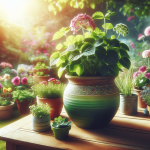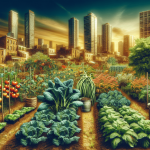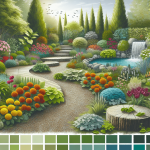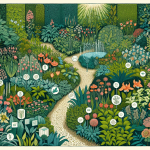This post may contain affiliate links. As an Amazon Associate, we may earn commissions from qualifying purchases.
Have you ever found yourself pondering how to design a garden that not only enchants the eye but also offers sanctuary to the myriad beneficial insects that quietly work their magic? Creating a garden with an insect habitat is a rewarding endeavor that intertwines aesthetics with ecology. Beneficial insects, such as bees, butterflies, ladybugs, and lacewings, play a crucial role in pollination and pest control. Embarking on this journey transforms your garden into a vibrant ecosystem, buzzing with life and color. So, let’s wander through this delightful meadow of ideas and discover how to craft this sanctuary.
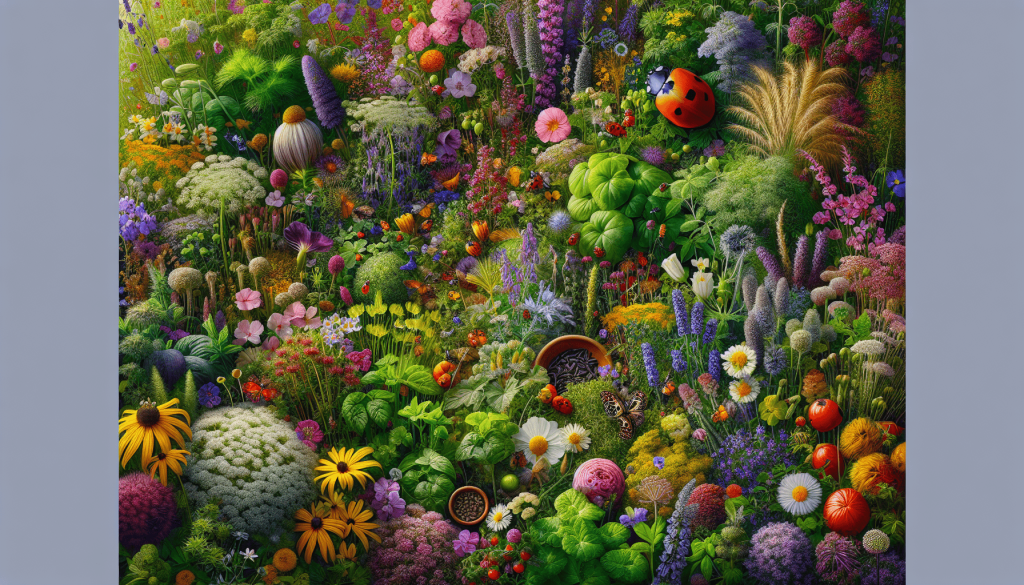
Understanding Beneficial Insects
Before you roll up your sleeves and dig into the soil, it’s essential to get acquainted with these garden allies. Beneficial insects are your unsung heroes, quietly toiling to maintain ecological balance.
Who Are These Beneficial Insects?
In the realm of gardening, not all insects are foes. A diverse army of beneficial critters roams your garden, each with a unique role that contributes to its vitality. These insects can be categorized mainly as pollinators and pest controllers.
- Pollinators: Bees, butterflies, and certain beetles transfer pollen from flower to flower, enabling fertilization and the production of seeds and fruits.
- Pest Controllers: Ladybugs, lacewings, and parasitic wasps help control pest populations. They feast on aphids, caterpillars, and other harmful insects that might otherwise wreak havoc on your plants.
Understanding their functions helps you appreciate why fostering these tiny helpers is worth every leaf and flower you plant.
Why Are They Important?
Imagine a garden where vegetables don’t bear fruits and flowers stand barren. Without beneficial insects, this grim reality might be just around the corner. They ensure your garden flourishes by providing natural pest control, reducing the need for chemical pesticides, and enhancing the biodiversity of your local environment.
Designing Your Garden with Insects in Mind
Crafting a garden that serves as a haven for beneficial insects involves a bit of planning and a sprinkle of creativity. Let’s dig into the design aspects you’ll need to consider.
Choosing the Right Plants
The first step in creating this sanctuary is choosing the right mix of plants. Diversity is key. A variety of plants offers continuous blooms through the seasons, providing food for pollinators and shelter for pest controllers.
- Native Plants: Opt for native species as they are well-suited to the local climate and soil, and require less maintenance. They also have established relationships with local insects.
- Flowering Plants: Herbs such as lavender, basil, and rosemary not only add aroma to your garden but also attract bees and butterflies. Flowers like marigolds and sunflowers are vibrant and inviting for many beneficial insects.
| Plant Type | Beneficial Insects Attracted |
|---|---|
| Native Plants | Bees, butterflies, beetles |
| Flowering Plants | Bees, butterflies, wasps |
| Herbs | Bees, hoverflies, parasitoids |
Structuring for Shelter
Your garden isn’t just about pretty flowers; it’s also about structure and variety. Insects need shelter from predators and extreme weather conditions.
- Ground Cover: Include ground covers and perennial grasses. They provide habitat and protection for ground beetles and other small insects.
- Layer Your Plants: Combine different heights and types of plants. Tall trees and shrubs offer perching spots for birds and beneficial wasps, while low-growing plants provide cover for ground-dwelling insects.
Water Sources
Even insects need a drink from time to time! Providing a water source helps sustain them, especially during dry spells.
- Shallow Water Dishes: A simple dish filled with water and pebbles can make a significant difference. The pebbles offer safe landing spots without drowning the insects.
Maintaining the Habitat
Once you’ve set up your garden, the work doesn’t entirely stop there. A regular maintenance routine ensures it remains a flourishing haven.
Avoiding Chemicals
The use of pesticides can be counterproductive. These chemicals don’t discriminate between harmful and beneficial insects, often wiping out the latter.
- Organic Solutions: If pest problems do arise, opt for organic solutions. Neem oil and insecticidal soap can effectively manage pests without harming beneficial insects.
Encouraging Native Fauna
Allow some natural predation and appreciate the role birds and other small animals play in the ecosystem. They contribute to pest control and add another layer of life to your garden.
The Ecological Benefits
Beyond the obvious perks of a thriving garden, providing habitat for beneficial insects offers wider ecological benefits.
Enhancing Biodiversity
Your efforts to plant native and diverse flora contribute to greater biodiversity. This has a cascading effect, supporting other wildlife and maintaining ecological balance.
Supporting Local Ecosystems
Your garden can be a piece of a larger puzzle, contributing to local conservation efforts and supporting species that might be threatened or endangered.
Carbon Sequestration
Plants play a significant role in capturing carbon dioxide, a major greenhouse gas. A diverse garden effectively engages in carbon sequestration, contributing to climate change mitigation efforts.
Aesthetic Appeal
Functionality aside, a garden designed for beneficial insects can be incredibly beautiful. The variety of plants, colors, and the sight of fluttering butterflies or busy bees add a new dimension to your outdoor space.
Designing with Color
Colors not only attract insects but also create a visually stunning garden. Think of your garden as a canvas where you can play with complementary and contrasting colors to create striking looks.
Adding Features
Consider adding features such as a small pond or a rockery to create more habitat diversity and visual interest. These elements can attract different types of wildlife and enhance the sensory appeal of your garden.
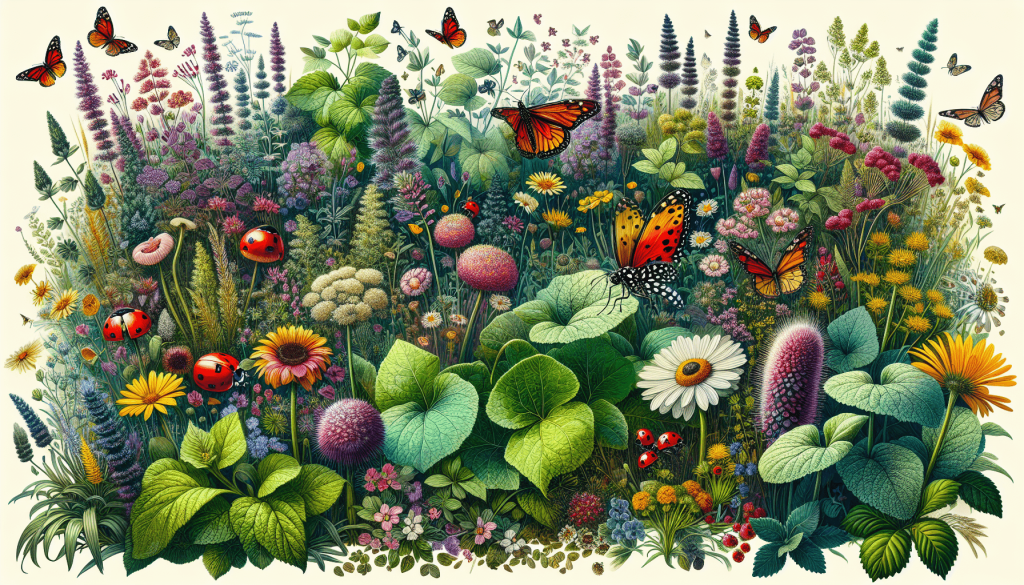
Troubleshooting Common Issues
As with any garden, challenges are part of the process. Identifying and addressing these issues promptly helps maintain your insect-friendly habitat.
Overpopulation of Pests
If pests seem to proliferate, it’s time to reassess your garden’s ecological balance. Consider:
- Introducing Natural Predators: Sometimes the ecosystem needs a little nudge. Introducing ladybugs or lacewings can help keep pest populations in check.
Plant Diseases
Monitor your plants for signs of disease to prevent them from spreading.
- Companion Planting: Planting certain species together can naturally ward off diseases and pests.
Climatic Challenges
Extreme weather can stress insects and plants alike.
- Mulching: Mulching helps retain soil moisture during hot weather and provides shelter for insects during cold spells.
Getting Involved in Community Efforts
Gardening is not only about personal or family enjoyment but can also be a gateway to engaging with your community. Sharing the abundance of your garden or setting up communal insect-friendly spaces spreads awareness and contributes to local environmental efforts.
Hosting Educational Workshops
Organize or participate in workshops to educate others about the importance of beneficial insects and how to create habitats for them.
Participating in Citizen Science
Join citizen science projects that collect data on local insect populations. It’s a rewarding way to contribute information that might help scientists understand and protect these creatures better.
Conclusion
Creating a garden that provides habitat for beneficial insects is a commitment to nurturing a healthier planet. It might begin as a personal endeavor but often grows into something far more impactful. By fostering diversity, embracing sustainable practices, and engaging in your community, you contribute to a worldwide effort to preserve biodiversity and ecological balance. Your garden becomes a snapshot of beauty and life, a testament to the silent, tireless labor of those tiny creatures that make it flourish. So, next time you see a ladybug or a bee buzzing among the petals, know they’re there because of the haven you’ve created—an oasis of life in full bloom.

